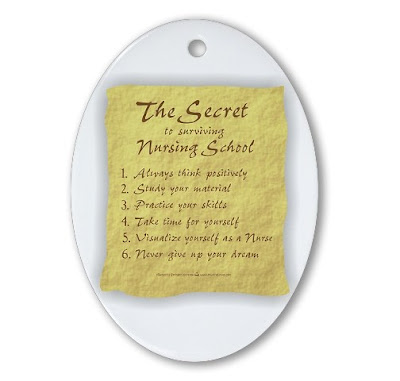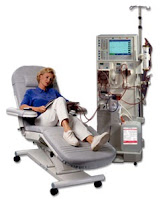A complete physical examination is an important part of newborn care within the first 12 hours of life. Each body system is carefully examined for signs of health and normal function. The physician also looks for any signs of illness or birth defects. Physical examination of a newborn often includes assessment or examination of the following:
A. Vital Signs (normal readings):
- Axillary temperature - 96°F to 99°F or 35.6°C to 37.2°C
- Pulse - 120 - 160 bpm, normally irregular
- Respiration - 30 - 60 per minute, irregular, abdominal
- Blood Pressure - 60 - 90mmHg (systolic) , 40 - 90 mmHg (diastolic)
- Length - 18 - 22 in. or 45 - 55 cm., average - 20 in.
- Head circumference - 13 - 14 in. or 33 - 35 cm
- Chest circumference - 12 - 13 in. or 30 - 33 cm
- Weight - average is 7 pounds or or 3.2 kilogram
- The skin is usually reddish, although the fingers and toes may have a bluish tinge because of poor blood circulation during the first few hours.
- Presence of vernix caeseosa (is the waxy or cheese-like white substance found coating the skin of human babies.)
- Some cracking and peeling of skin
- Presence of Milia (tiny cysts and appear as whitish pinhead-sized spots mainly on and around the nose which usually disappear within a few weeks.
- Occasionally, the skin has several hard lumps (subcutaneous fat necrosis) due pressure from bones destroyed some fatty tissue. Most common on the head, cheek, and neck, particularly if forceps were used during delivery. May break through to the skin surface, releasing a clear yellow fluid, but they usually heal fairly quickly.

D. Head
- Presence of moulding (shaping of the head from passage through the birth canal)
- Sutures are palpable with small separation
- Presence of anterior fontanelle (diamond shaped, soft and flat and has 2-4 cm in size) and posterior fontanelle (triangular shape and has 0.5 - 1 cm in size)
- Caput succedaneum presents as a scalp swelling that extends across the midline and over suture lines and is associated with head moulding. It does not usually cause complications and usually resolves over the first few days.
- Hair are silky and soft
E. Face
- Symmetric in appearance and movement
- parts are proportional and appropriately placed
- Well formed and complete
- Startle response to loud noises
- Upper ear must be about same level with the outer canthus of the eye
2. Eyes
- Symmetric and clear
- Scant or absence of tears
- Pupils equal and react to light
- Follow objects across midline
- May have subconjunctiva haemorrhage
- Edema of eyelids from pressure during birth
3. Nose
- Both nostril open to air flow
- May have slight flattening from pressure during birth
4. Mouth
- Mouth, gums, and tongue are pink
- Lips and palate intact
- Presence of sucking, rooting, swallowing and gag reflexes
- Short neck turns head easily from side to side
- Presence of clavicles (bones across the upper chest)
- Cylindric. Xyphoid process may be prominent
- Symmetric
- Nipples present and located properly
- May have engorgement with white discharge
7. Abdomen
8. Genital
Female
- Usually distended
- Check for masses and hernias
- Umbilical cord clumped securely. Cord must have 2 arteries and 1 vein
8. Genital
Female
- Labia are prominent because of exposure to the mother's hormones, and they remain swollen for the first few weeks
- Small amount of vaginal discharge white mucous in color
- Urethra is open and vagina present
- Testes should be present in the scrotum
- Rogue on scrotum
- Urethra open at the tip of penis
9. Extremities (both upper and lower)
- Equal and bilateral movement of extremities
- Correct number and formation of fingers and toes
- Good muscle tone and flexion
- Legs equal in length
- Normal position of feet
10. Back
- No opening observed or felt in the vertebral column to exclude spina bifida (is a developmental congenital disorder caused by the incomplete closing of the embryonic neural tube)
- Anus patent
- Sphincter tightly closed
- Grasp reflex
- Press finger against base of fingers or toes
- Fingers curl tightly and toes curl forward
- Plantar creases - these creases on the soles of the feet range from absent to covering the entire foot, depending on the maturity.
- Sucking reflex - when an object is placed in their mouth, newborns begin sucking immediately
- Rooting reflex - when either side of their mouth is touched, newborns turn their head toward that side. This reflex enables newborns to find the nipples.
- Moro Reflex - when newborns are startled, their arms and legs swing out and forward in a slow movement with fingers outstretched. This disappears in 6 months.















